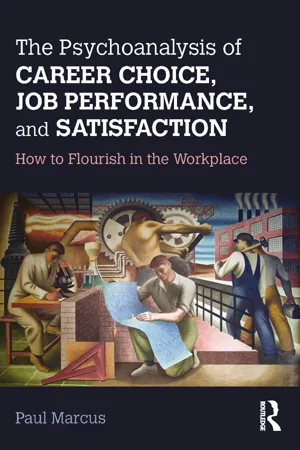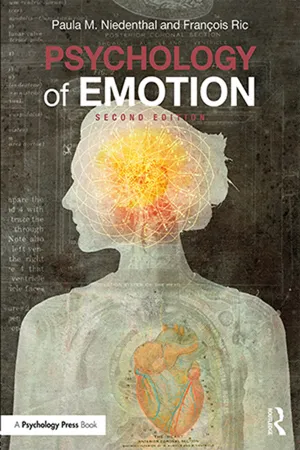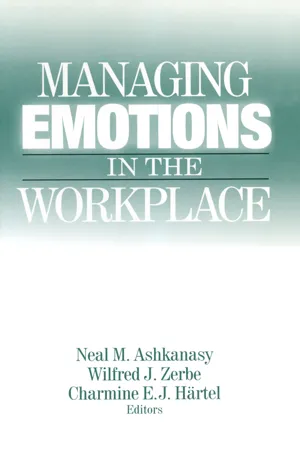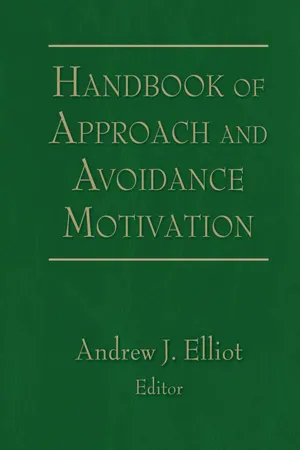Functions of Emotions
The functions of emotions in business include providing valuable information about employees' and customers' needs, influencing decision-making and behavior, and shaping organizational culture. Emotions can also drive motivation, creativity, and innovation, as well as impact customer satisfaction and loyalty. Understanding and managing emotions in the business context is crucial for fostering a positive work environment and achieving business success.
8 Key excerpts on "Functions of Emotions"
- eBook - ePub
Business Communication Management
The Key to Emotional Intelligence
- Dr. Anna Rostomyan(Author)
- 2020(Publication Date)
- tredition(Publisher)
...Section Two Passion and Reason 1.4. The Role of Emotions in Business Management Largely speaking, Business Communication is generally goal-oriented; it aims at establishing peaceful relations with the colleagues and transmitting and receiving information. Business environment, indeed, increasingly grows very complex where human resources become the only sustainable source of competitive advantage for any Management. In terms of today’s capitalized and globalized world, it has become the challenge of each and every manager and entrepreneur to increase the turnover and motivation for the qualitative employees to stay and work the best way they can for their companies’ targets. All these cannot be performed unless the manager is well aware of his/her employees’ abilities, potential, needs and expectancies. Still, there is also a great factor that should by all means be taken into consideration, namely emotions. Being a motivator, a leader, a listener, a moderator and a presenter, the manager should at the same time take the role of a psychologist processing the information on his employees’ emotions, feelings, beliefs and desires, which will eventually ensure a better understanding of their own selves and will guarantee preservation of interpersonal good and stable relations, which in their turn will eventually ensure better results and larger labour output in your business. A professional manager should by all means be able to communicate amicably with the employees so that they, first of all, feel positive disposition towards them, unless there is no proper reason to spoil their harmonious relations. Actually, it is generally known that communication and discussion mainly rely on the interpretive power of the speakers; this is the reason why a large portion of information is being conveyed through speech implicitly – without saying it openly. Leadership, in particular, is necessarily linked with the ability of interpretation and processing of information...
- eBook - ePub
Managing and Leading People through Organizational Change
The Theory and Practice of Sustaining Change through People
- Julie Hodges(Author)
- 2021(Publication Date)
- Kogan Page(Publisher)
...If we know what our emotional reactions are, we can identify what types of beliefs we may have such as, sadness = loss, anxiety = future threat, and anger = violation of our rights. Activity Using the ABC model identify a recent change in the organization in which you work, or an organization (such as a social or sports club) that you are familiar with: Write down the situation (A). Describe the event objectively. Answer these questions: Who? What? Where? When? Write down your thoughts about the change (B). Next write down your feelings – your emotion – about the change (C). What does this tell you about how your attitudes and beliefs are based on your experience of previous changes? Emotions and culture The culture of an organization can play an important role in generating emotions and influencing whether individuals express or suppress their emotions. Culture can both engender emotions and provide for their expression in socially accepted ways. This role is emphasized by John Bratton and colleagues who say that: The most critical function of corporate culture is to generate commitment and enthusiasm among followers by making them feel they are part of a ‘family’ and participants in a worthwhile venture. (2005: 51) The culture of an organization is, therefore, important in signalling to staff how emotions are to be experienced, expressed and regulated. As Stephen Fineman says: The culture of the organization helps create and reinforce the dominant emotions of control in the workplace, such as guilt, fear, shame, anxiety, or looking happy. We have to learn what emotional ‘face’ is appropriate, and when to use it. (2013: 23) Culture can positively shape emotions by encouraging the experience of emotions and providing ways to express them (Beyer and Nino, 2001). A healthy organizational culture is one where emotional expressiveness is encouraged and value is placed on the emotional elements of work...
- eBook - ePub
The Psychoanalysis of Career Choice, Job Performance, and Satisfaction
How to Flourish in the Workplace
- Paul Marcus(Author)
- 2017(Publication Date)
- Routledge(Publisher)
...124). 3 As Senge further notes, at the heart of the learning organization is adequately resolving the daunting emotionally driven human conflict that “we both fear and seek change” (ibid., p. 3). Viewing systems collectively involves “a multifaceted journey of thinking and feeling,” (ibid., p. 144) and the success of this journey mainly depends on the “quality of relationships people develop” (ibid., p. 356). Moreover, research has found that in many contexts emotions “influence behavior independently of cognition.” For example, “emotional reactions to risky situations,” such as decision-making during strategic change, “often diverge from cognitive assessment of those risks.” In addition, “when such divergence exists emotional reactions often drive behavior” (Huy, 2005, p. 8). Also worth noting is that the often described discrepancy between what people say and do, such as in customer purchasing behavior or team relations, has been found to be mainly unconsciously driven. Marketing experts like Gerald Zaltman of Harvard Business School noted that “[u]nconscious thoughts [and emotions] are the most accurate predictors of what people will actually do” and this is hardly accessible in a typical focus group (Roberto, 2011, p. 323). Thus, regardless of one’s theoretical perspective, there is a consensus in the scholarly literature that emotions and their dispersions, dysfunctions and pathologies have a powerful role in facilitating successful organizational change and learning. However, ironically, “thoughtful management of employees’ emotions during strategic change is little understood and even less systematically practiced in organizations” (Huy, 2012, p. 814). 4 In fact, one IBM-sponsored survey from 2010 of 1,500 chief executives found that “many leaders expressed doubt or lack of confidence in their own ability to lead through times of complexity” (Mueller et al., 2011, p...
- eBook - ePub
- Paula M. Niedenthal, François Ric(Authors)
- 2017(Publication Date)
- Psychology Press(Publisher)
...Such climates are, by the way, independent of the degree to which the country endorses a culture of peace. Research conducted during or after specific political events has documented acute emotional climates. These events include terrorist attacks in Spain (e.g., Conejero & Etxebarria, 2007) and genocide in Rwanda (Kanyangara et al., 2007). Emotional climate thus seems to play an important role in signaling the need for and motivating collective action as well as gauging its success. In sum, for the group, emotions serve to define group boundaries and maintain social structure and norms within the group. Living in groups is, of course, a challenge because of the possibility of conflicting interests, opinions, and natures (Trivers, 1971). Without fundamental ways to make people feel that they want to facilitate the functioning of the group, adhere to group rules and norms, and recognize group leaders, societies would probably fail. Emotions seem to be at least part of the solution to living successfully in groups. Summary It is widely accepted that emotions are functional, but there are many ways of thinking about just how they are functional. Furthermore, the functions can vary depending on the size of the social unit. In this chapter, we described the function of emotion for three social units: the individual, the dyad, and the group. The function for the individual is a basic survival function. The body’s physiology, distinct facial expressions, and the broaden-and-build forces of positive emotions all serve to help the individual deal with challenges and opportunities relevant to survival that are posed by the environment. For two people interacting, dyads, emotions—both features of emotions such as parts of facial expressions and tone of voice, in addition to the entire experience of emotion—serve the function of communication of critical information. Our emotions serve to tell others where to look and whether we and they are in danger...
- eBook - ePub
- Neal M. Ashkanasy, Wilfred J. Zerbe, Charmine E. J. Hartel(Authors)
- 2016(Publication Date)
- Routledge(Publisher)
...Research by Barsade (in press) and Bartel and Saavedra (2000) has found that even one member’s positive emotional display can initiate positive emotions among work group members, leading to greater group cooperativeness, less group conflict, and positive perceptions of individual task performance (see also Härtel, Gough, and Härtel in press). Barsade concluded from her study that managers have a special role to play in this respect, namely, themselves displaying positive affect that carries through to socialization processes and the group’s culture. Ashkanasy and Tse (2000) also stress the importance of managers’ displays and management of positive emotion in engendering higher levels of group effectiveness and productivity. In summary, although there is still scope for further research into the antecedents and consequences of emotional labor, the indications to date, beginning with Hochschild’s (1983) research, are that emotional labor is a critical component of employee effectiveness. Recent research has extended the early findings in service settings to encompass everyday interactions at work. In this sense, emotional labor becomes another source of affective events that need to be managed if the full potential of individual and organizational work outcomes is to be realized. Mood Effects in Organizations The third topic we address in this introduction is mood in organizational settings. Moods differ from emotions in that they are more diffuse and longer lasting. Consistent with AET, recent research has demonstrated that both positive and negative moods affect the way employees think and behave at work (see George and Brief 1996a; Isen 1999). Research into mood in organizations began in the early 1990s (e.g., George and Brief 1992; Isen and Baron 1991), at around the same time as mood researchers in social psychology were beginning to have an impact (e.g., see Forgas 1995). Results of these studies have consistently highlighted the pervasive effects of mood...
- eBook - ePub
The Why of Consumption
Contemporary Perspectives on Consumer Motives, Goals and Desires
- Cynthia Huffman, David Glen Mick, S. Ratneshwar(Authors)
- 2003(Publication Date)
- Routledge(Publisher)
...In addition, affect can have direct effects on behavior that are not mediated by attitudes (Allen, Machleit, and Kleine 1992). Moreover, affect is often a better predictor of behavior than evaluation (Breckler and Wiggins 1989; Abelson et al. 1982). These and other findings justify independent and systematic research on the role of emotions in goal-directed behavior. Emotional influences on goal-directed behavior Our purpose in this section is to provide an overview of the psychological literature that is relevant to a consideration of the role of emotions in goal-directed behavior. We will focus on two Functions of Emotions. One is to provide feedback about the extent of goal attainment. This may be called the informational function of emotions in goal pursuit. The other is to direct and energize goal-directed behavior. This may be called the motivational function of emotions in goal pursuit. Some approaches focus more on the informational function, others on the motivational function, and still others on both. The theories covered in our review are quite varied, so it is necessary to impose some structure on the discussion. We will do this by classifying the frameworks along two dimensions. First, we will distinguish between approaches in which emotions are treated as broad underlying dimensions and approaches in which emotions are regarded as discrete categories. In the former approach, researchers have mostly studied the effects of positive versus negative emotions on behavior, although other dimensions such as degree of arousal have sometimes been discussed as well. In the latter approach, specific emotions such as happiness, sadness, anger, or fear are the focus of interest, and the idiosyncratic effects of these emotions on behavior are studied in greater detail...
- eBook - ePub
How to Steer People
Understand power games, leadership & psychology of persuasion, influence human behaviour, achieve goals, strategy & rhetoric to your success as a top manager
- Simone Janson, Simone Janson, Simone Janson(Authors)
- 2024(Publication Date)
- Best of HR – Berufebilder.de®(Publisher)
...Emotions in business: from the mood to the purchase decision // By Dr. Cornelia Topf Emotions, moods, moods, moods have for a long time been presented as unwelcome ghosts in the wretchedness of the Reason's Temple, although they are ubiquitous and fundamental to the existence of man. For a long time the view was that feelings in the business have nothing to look for. Never forget that feelings are in the game! I would like to start this text with a very fitting quote from Dale Carnegie. This is: “When dealing with people, we must never forget that we are not dealing with logical beings, but with beings full of feelings, prejudices, pride and vanity.” The illusion of the easily computable human being Even today, many feel that their ability to behave in an unrestrictedly rational way is desirable, because it is pretended that humans are relatively easy to calculate. Unrestricted rational behavior is the main feature of the Homo oeconomicus, which was presented to generations of economics students as an ideal. Homo oeconomicus - just a product of economic theory? Its decisions can be represented as maximizing a utility function. He therefore represents an exclusively “economically” thinking person who is the basis of the analyzes of classic and neoclassical economic theory. Deciding is not rational! However, brain research has shown that decisions are never made rationally. Not least, they are at the center of scientific and economic attention at a breathtaking pace. Gray in gray and pink And we can all observe it on ourselves: In a cloudy mood, for example, the world appears “gray in gray”. If we are in love, we have the pink glasses on. We perceive objective facts differently depending on the emotional state, they “feel” accordingly differently. The same is then no longer the same. Deeply human Neither good nor bad, neither reprehensible nor counterproductive, but deeply human...
- eBook - ePub
- Andrew J. Elliot, Andrew J. Elliot(Authors)
- 2013(Publication Date)
- Psychology Press(Publisher)
...We will argue that much of the function and dysfunction of emotions in human culture has been affected by sexual selection as well as survival pressures. Finally, and perhaps most provocatively, we explore the idea of memetic replication with regard to emotion. We argue that emotions offer a powerful ally for the propagation of memes, and hopefully will offer some provocative ideas about the plasticity with which both culture and self are developing. Functionalist Perspective on Emotions The word “emotion” is used every day in conversation, with a naïve, folk-psychology definition that is readily intuited. However, it proves exceedingly difficult to define what an emotion is in precise technical terms (Solomon, 2000). Consistent with a large body of prior work, we define an emotion as a system that involves and organizes many different processes and levels of analysis (Izard, 1991 ; Lazarus, 1991). Emotions connect sensory perceptions with very rapid appraisals of the valence and importance of the percepts. The appraisals are connected to physiological responses and cognitive processes, and these in turn are often connected to behavioral outputs. One of the hallmarks of emotions as systems is that there is some looseness in the connections between the different levels or processes. It is possible to have emotions without explicit cognitive involvement or behavioral output, for example. However, the stronger the emotional experience, the greater the entrainment of these different processes and levels of analyses (Cacioppo & Berntson, 1999). Emotions as Evolved Capacity: Three Levels of Analysis Why develop emotions? What problems of fitness do emotions help solve from the perspective of natural selection? Many functionalist models of emotion explicitly theorize that emotions are an evolved capacity of biological organisms (Cosmides & Tooby, 2000 ; Plutchik, 1980, 1993)...







